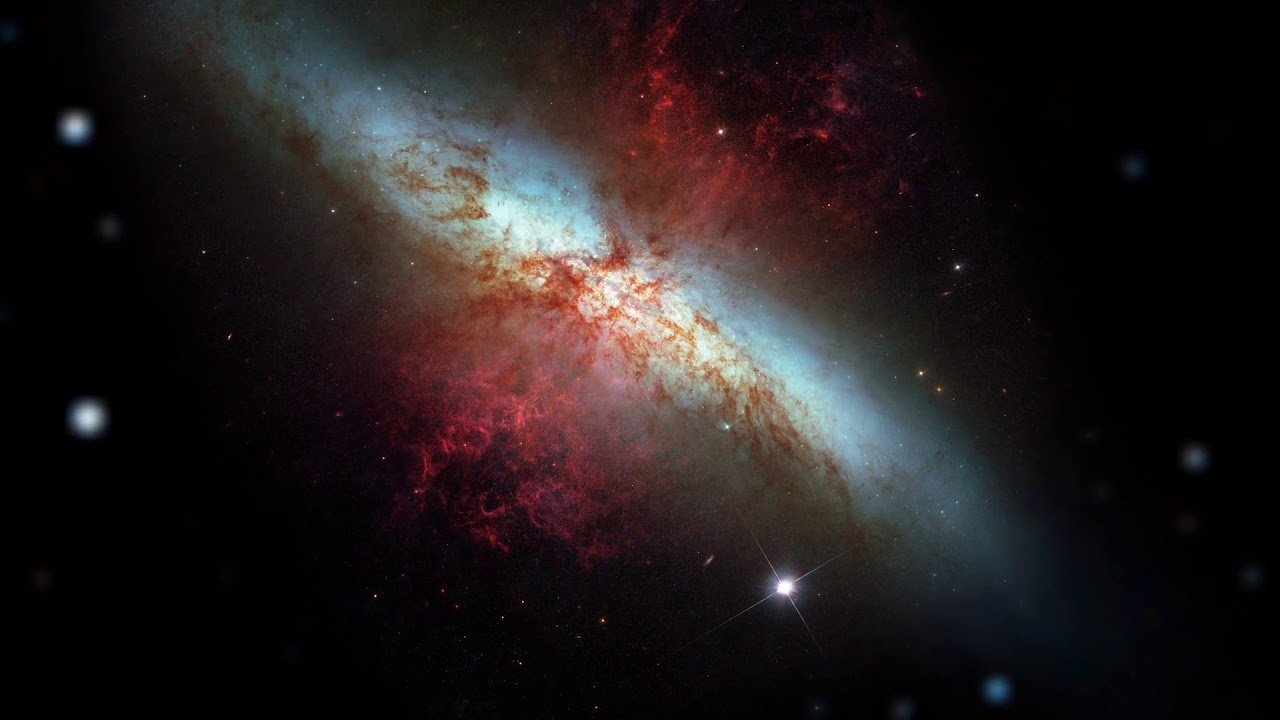
It is a small galaxy with a system of filaments emanating from the center. These filaments are most prominant when observed in Halpha, meaning they are filaments of ionized gas:

|
What is happening in this galaxy? At first, people though some sort of titanic explosions were ripping the galaxy apart. This is partly right -- there are titanic explosions occuring in the center of M82, but they are not destroying the galaxy. They are supernovae, and we now know M82 to be a starburst galaxy.
Realize that the star formation rate of M82 is similar to that of our favorite luminous (non-starbursting) Sc spiral M101, yet the sizes are very different. |
 |
Starburst galaxies are producing stars at rates well in excess of what is normal for regular star forming galaxies (adapted from McGaugh+ 2017):
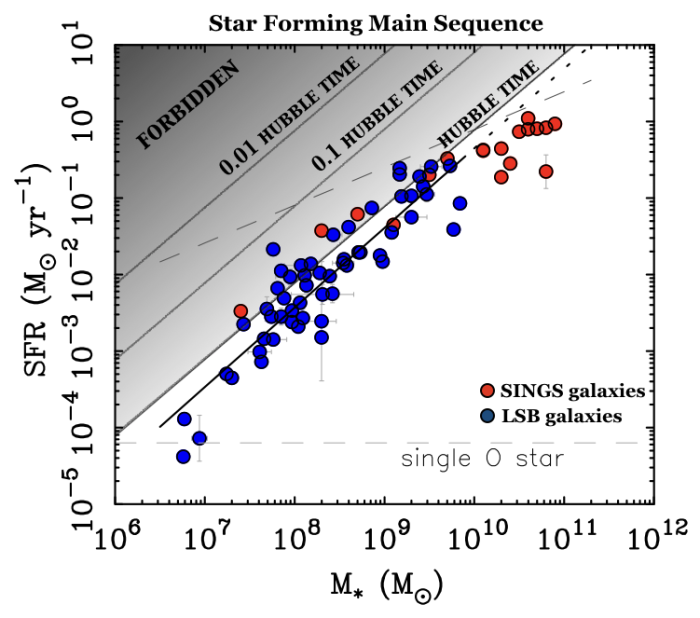
In a starburst galaxy, many massive young stars are formed, making the galaxy very bright and very blue. These massive stars also play havoc on the interstellar gas, heating it through stellar winds and supernovae, and can heat the gas to millions of degrees. This hot gas can flow out of the galaxy as a starburst wind. We can see this gas as the ionized filaments as well as in X-rays.
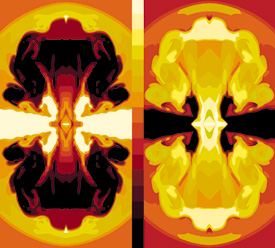
M82 in X-rays (from the Chandra satellite), showing the very hot outflowing gas:
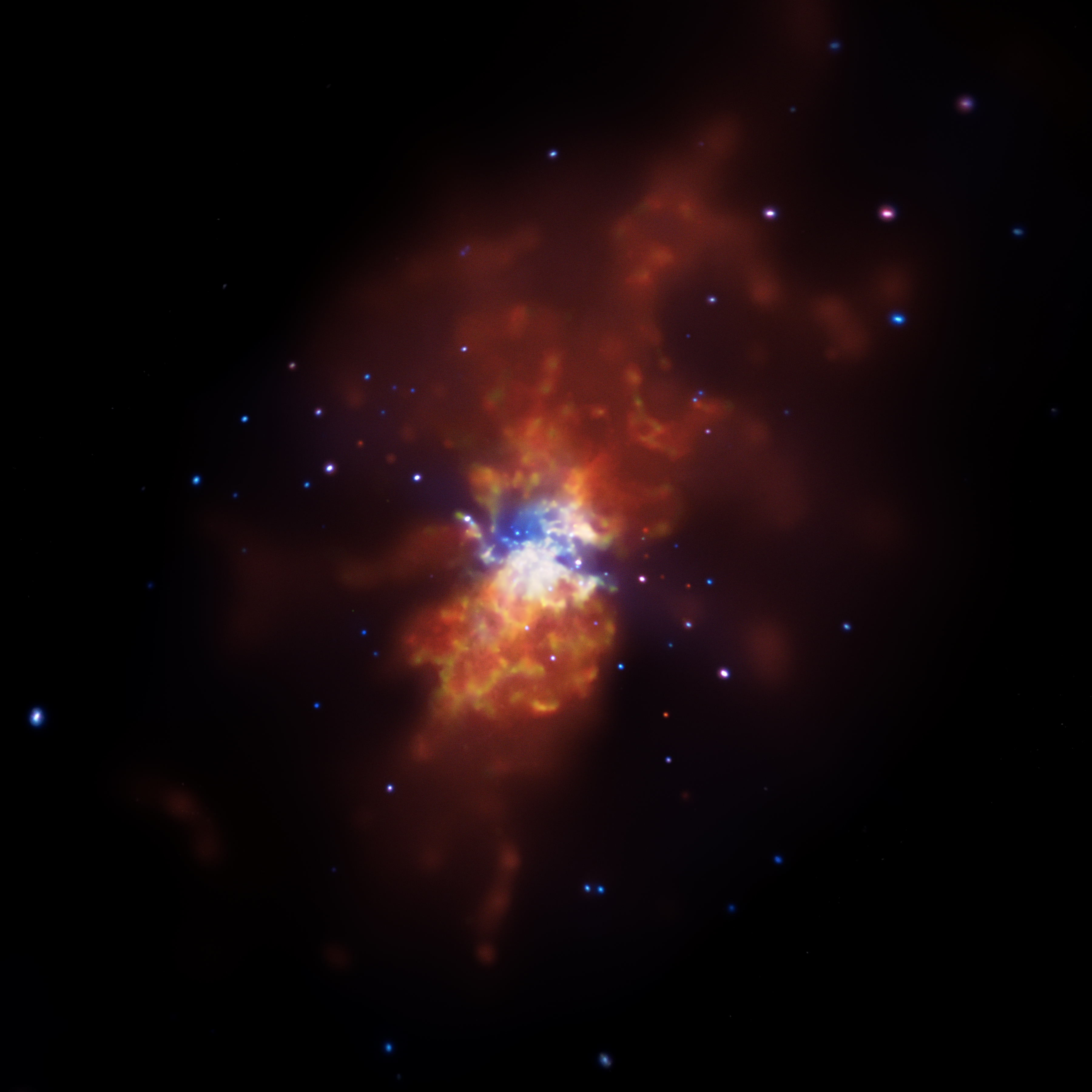
Question: why would the
starburst
phase be short? (How long would they take to use up all their gas?)
Starburst galaxies are not only bright and blue, but
they
are typically very dusty. Lots of gas, lots of dust, right? And what
does
dust do?
Could there be more starburst galaxies out there we don't know about? If dust is absorbing the light from the young stars and blocking us from seeing in the optical, that dust must heat up and emit infrared radiation. Starburst galaxies should be infrared bright.
In 1983, an infrared observing satellite was launched (IRAS). One of its jobs was to search for infrared bright starburst galaxies -- and it found lots.
|
Ultraluminous IRAS Galaxies.
Bright in the infrared, with luminosities
> 1012
Lsun. So luminous, in fact, that it is being
argued
whether or not star formation alone can power these galaxies -- maybe
black
holes are accreting material and providing luminosity as well.
What do these galaxies look like? Verrrrry peculiar. As we shall see, these all show signs that they are or have been involved in interactions (and even mergers) with other galaxies. Interactions somehow cause starburst activity! |
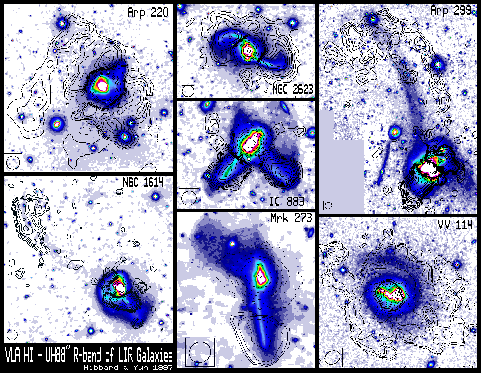 |
What about M82 -- is it interacting? You betcha!
|
|
|
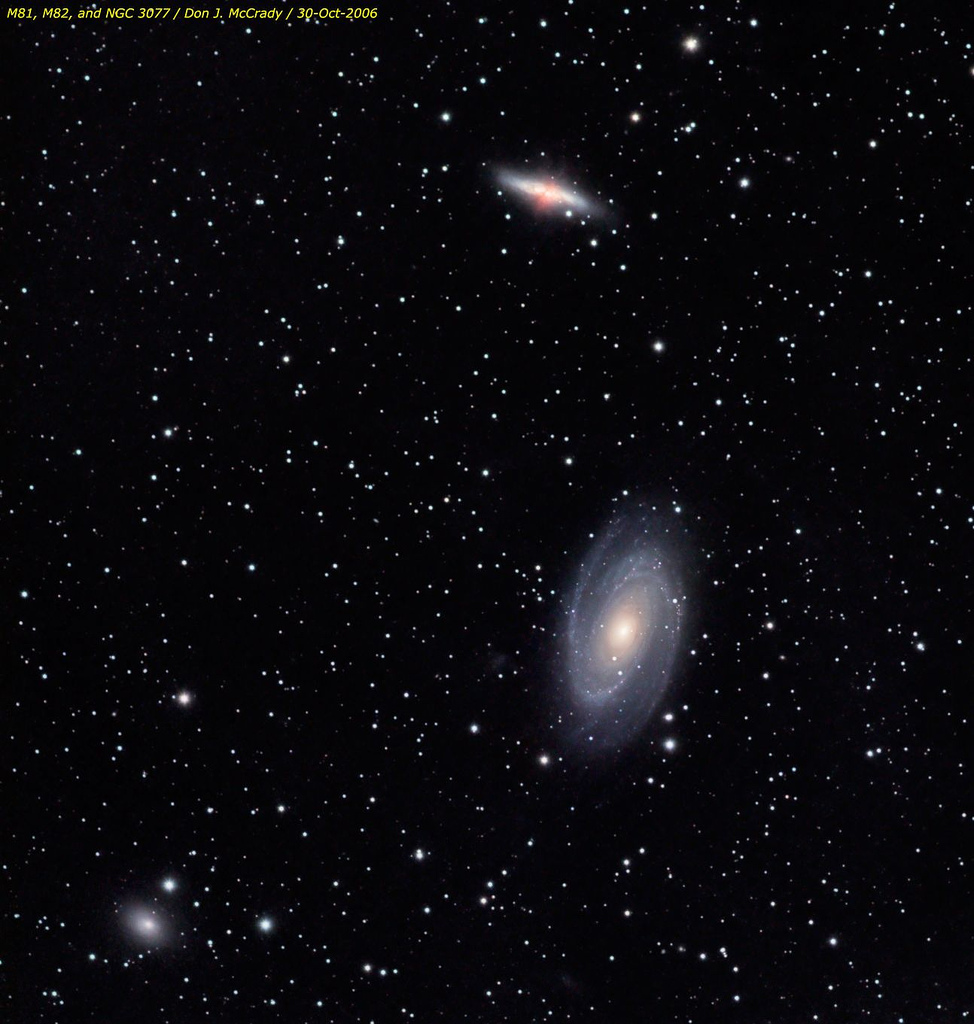 (courtesy Don McCrady) |
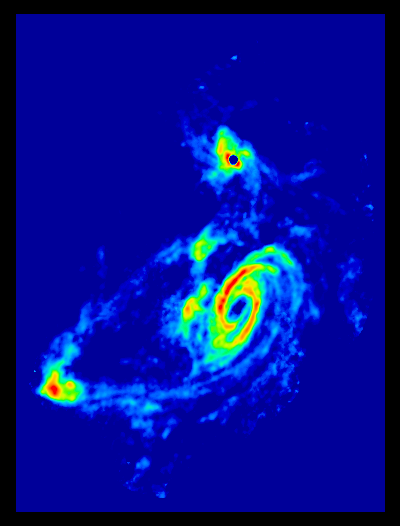 (from Yun et all 1994) |